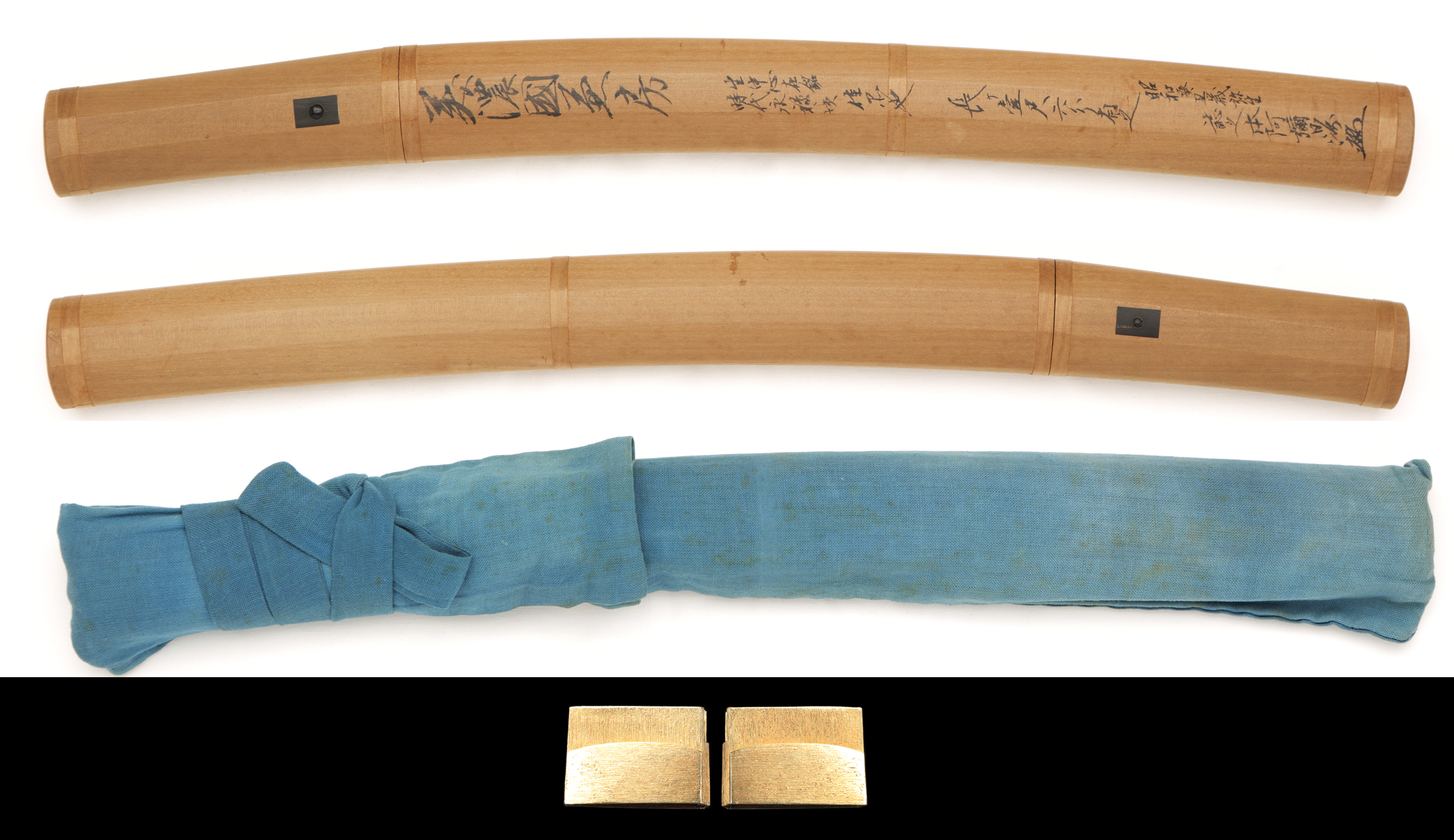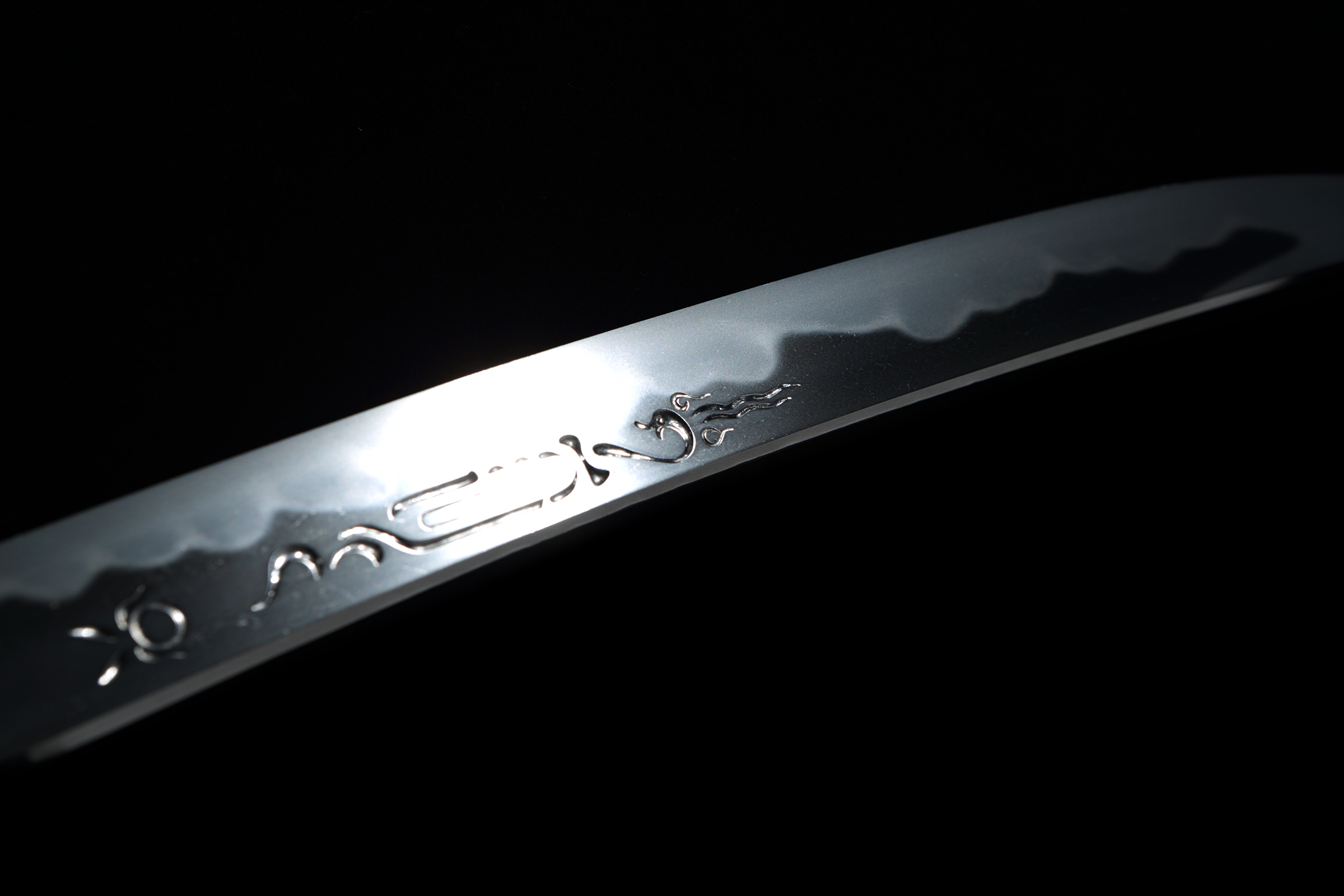
  |
Wakizashi, Shirasaya |
Kanefusa
|
[ Signature ] omote : "兼房" ura : - |
[ Size ] Blade length 32,3cm (1 shaku 0 sun 6 bu 6 rin), sori 0,6cm (1 bu 9 rin), moto-haba 3,09cm, moto-kasane 0,60cm, mekugi-ana(holes) 1 out of 2 filled, blade weight 230g , shirasaya length 48,7cm |
[ Period ] Muromachi, end of, around Eiroku "永禄" (1558-1569) |
[ Province ] Mino |
[ Feature ] [ Highlight ] |
 |
[ Attachments ] Habaki (suaka-ji, gold foiled, double), shirasaya, bag of shirasaya and NBTHK Tokubetsu Kichô paper ( issued on 6th November Shôwa 51(1976)) |
 |
[ Item number ] A030917 [ Price ] SOLD |
Please order by E-mail.

About TOUKEN KOMACHI
BACK
TEL&FAX +81-(0)3-5284-9014____E-mail : s_tsukada@toukenkomachi.com
|
Copyright © 2009 Touken komachi All rights reserved.
|